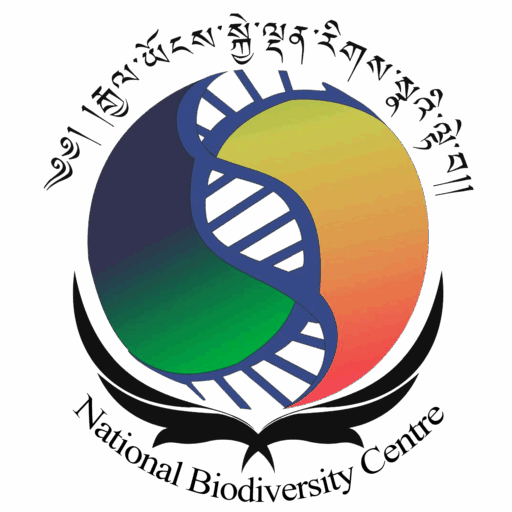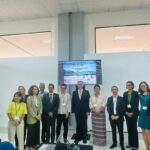The Plant Genetic Resources Division was established in Bhutan in response to 1997 BAP I while BAP I was formulated in response to Bhutan’s ratification of CBD by the 73rd session of the National Assembly. The 1997 BAP I on “Plant Genetic Resources” states that ‘where such facilities do not exist in the country, they should be developed, where desired’. Therefore, in view of the paramount importance of plant genetic resources for food and agriculture, the PGR Division was established under the National Biodiversity Centre for the Conservation and Sustainable Use of Plant Genetic Resources for Food and Agriculture (PGRFA) in the country considering the decline of traditional crop diversity in the country due to many complex factors namely urbanization, displacement of crop varieties, change in cropping system, etc.
The on-farm conservation of PGRFA was initiated in 2001 through a project called the Biodiversity Use and Conservation in Asia Program (BUCAP) project supported by Southeast Asia Regional Initiatives for Community Empowerment (SEARICE). This was followed by the Integrated Livestock and Crop Conservation Program (ILCCP) project in 2007 with funding support from UNDP-GEF that supported on-farm conservation and sustainable utilization of NUS like buckwheat and soybean.
Similarly, a project on diversification and crop improvement of rice was implemented under the framework of the International Treaty on Plant Genetic Resources for Food and Agriculture (ITPGRFA) through the fourth cycle of benefit-sharing fund that was implemented from 2013 to 2015 and the HANAS project funded by BTFEC (2014-2017) that supported on-farm conservation and sustainable use of finger millet through product development, value addition, and marketing.
These on-farm conservation projects focused on the promotion of traditional PGRFA diversity through crop improvement, Participatory Varietal Selection (PVS), product development, value addition, and marketing thereby contributing to the livelihood of the farming community and the maintenance of diversity in the field.
The National Plant Genebank was operationalized in 2005 for ex-situ conservation and sustainable utilization of rich PGRFA diversity through funding support from the Royal Government of Netherlands under the Framework of Sustainable Development Agreement. The germplasm are processed as per the international genebank protocols which was further validated through technical assistance from the Food and Agriculture Organization (FAO) in 2013. The Security Backup Genebank at ARDC Wengkhar was established in 2015 with funding support from the European Union Sector Support Project (EUSSP) and Rice project to mitigate the risk of loss of germplasm collections to natural or man-made catastrophes. Further, in 2016, the Genebank was upgraded with the procurement and establishment of In vitro and Cryo-preservation facilities with financial support from EU-GCCA for the conservation of horticultural crops and those crops that are propagated vegetatively.
Subsequently, the National Plant Genebank also implemented the Integrated Management of Plant Genetic Resources project (IMPGR) (2016- 2017) supported by AFACI, focusing on phenotypic characterization of rice and capacity building of genebank staff.
On the policy front, the Genetic Resources Policy Initiative (GRPI II) project was implemented with financial and technical support from Bioversity International which supported policy, awareness, and research work on the implementation of the Multilateral System (MLS) from 2013 to 2015.
- a. Assess, document and status reporting of plant genetic resources for food and agriculture.
- b. Coordinate and implement on-farm conservation and sustainable use programs of plant genetic resources for food and agriculture.
- c. Serve as the national repository for PGRFA germplasm.
- d. Develop policies and strategies for effective conservation and sustainable use of PGRFA.
- e. Develop protocols linking in situ and ex situ PGRFA conservation programs.
- f. Coordinate and implement targeted interventions for prioritized PGRFA.
- g. Conduct research and studies on PGRFA diversity to generate required information.
- h. Provide germplasm and associated information for breeding and utilization.
- i. Promote public awareness on the importance of plant genetic resources for food and agriculture for food and nutrition security.
- j. Promote regional and international linkages for technology transfer and effective conservation and management of plant genetic resources for food and agriculture.
Currently, the National Plant Genebank holds 3,500 accessions of about 46 crop species comprising cereals, legumes, oilseeds, some vegetables, and a few forages, collected from interior pockets of Bhutan representing all agroecological zones of Bhutan. Additionally, the National Plant Genebank also holds 262 accessions of 197 species of orthodox tree species with the support of Millennium Seed Bank. Ex situ activities under the program include gap filling of germplasm collection, multiplication of small samples and repatriated samples, characterization of accessions and initiating conservation through in vitro and cryopreservation methods. An inventory on on-farm crop diversity is also in full swing with the objective of assessing on-farm crop diversity extant in the field.
On-farm conservation initiatives have established a total of 37 on-farm conservation sites across the country promoting conservation and use of traditional crop varieties through PVS, crop improvement, rehabilitation, value addition, and capacity building of farming communities.
Two drought-tolerant rice varieties, Zangthi and Bhur Kamja were promoted in the on-farm conservation sites in the 11th FYP.
The Community Seed Banks (CSBs) in Phuntshothang and Gomdar were also established in 2010 with funding support from BUCAP and Rice projects and in Bumthang in 2011 coinciding with Royal Wedding and National Day celebration through the support of ILCCP project. Two more CSBs were recently established by other organizations viz. CSB in Dewathang by the Samdrup Jongkhar Initiative (SJI) and Buli CSB directly by SGP of UNDP.
Till date the implementation of PGRFA conservation activities also produced a number of publications which are Plant Genetic Resources: Bhutanese Perspective (2000), Plant Genetic Resources of Bhutan, Volume I: Field Crops (2008), Biodiversity Use and Conservation in Asia Program (BUCAP) 2002- 2010 (2011), History of important food crops in Bhutan (2015), Harvests: Farmer’s success stories (2016) and the National Cereals Conservation Strategic Action Plan (2016), Catalog on Characterization and Pictorial Varietal Descriptions on Traditional Paddy varieties conserved in the National Plant Genebank in 2019.
Currently, two more projects on on-farm conservation and sustainable utilization viz. Evolutionary Plant Breeding (EPB) on rice and beans is being implemented from 2018 to 2023 which is being supported by Bioversity International. Another project is on “Participatory On-Farm Conservation, Sustainable Use and Management of Neglected and Underutilized Crop Species (NUS) for Livelihood and Adaptation to Climate Change” which is being implemented from 2020 to 2023.
Lately starting from March 2023, the National Biodiversity Centre has been coordinating Work Package 1 of Biodiversity for Livelihood, Opportunity, and Development (BOLD)-Seed System Research financially supported by NORAD and Crop Trust and technically coordinated by the Norwegian University of Life Sciences to characterize local and national seed systems. Another important project on BOLD Work Package –Strengthening Genebank is in the pipeline under the funding support of NORAD and Crop Trust.



